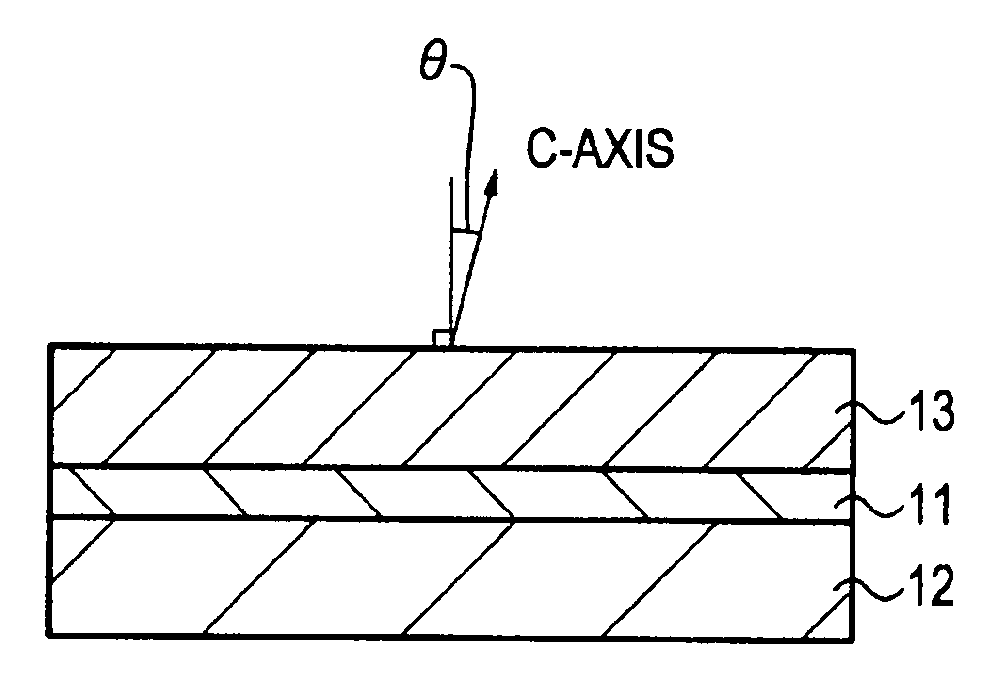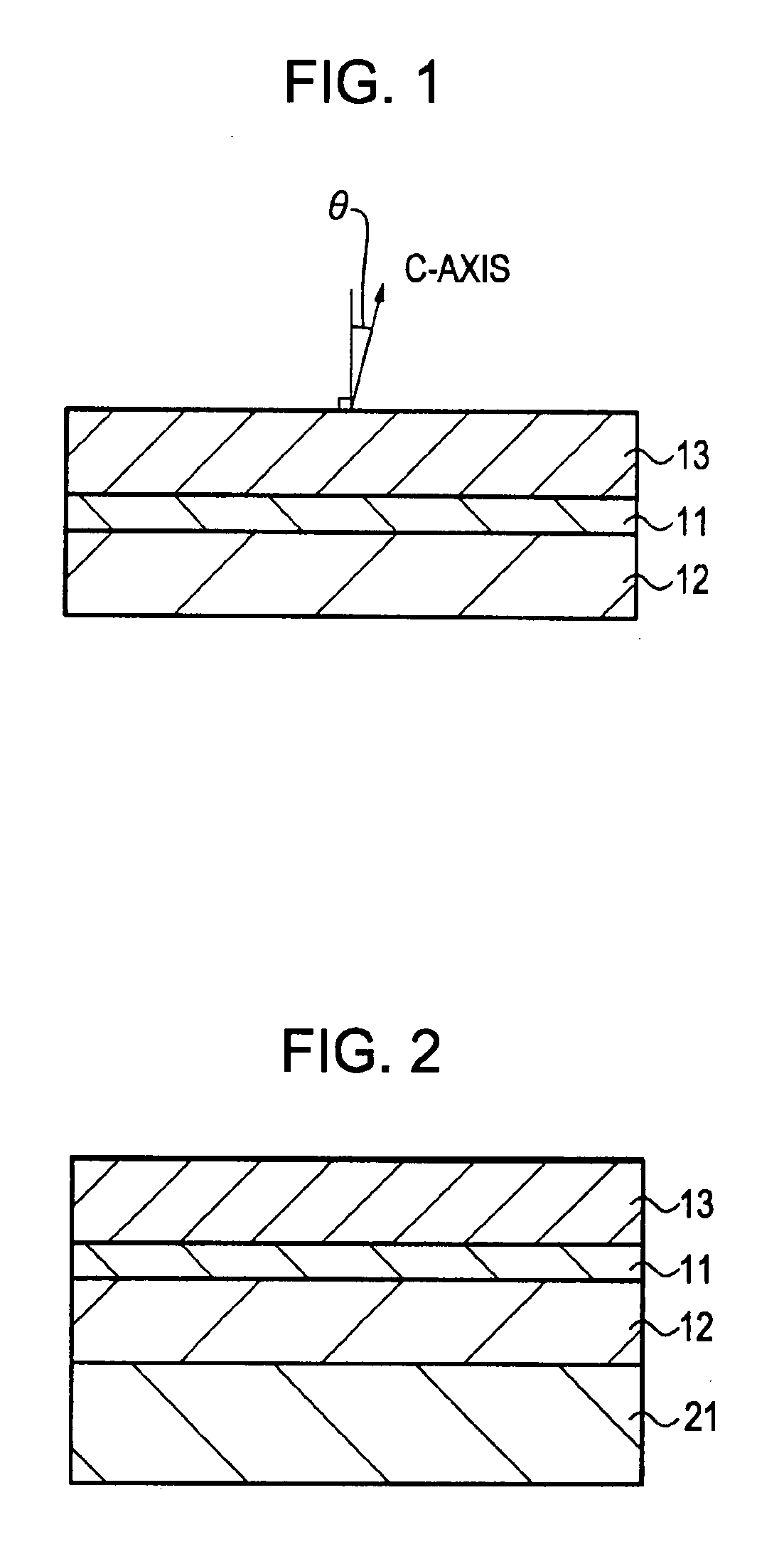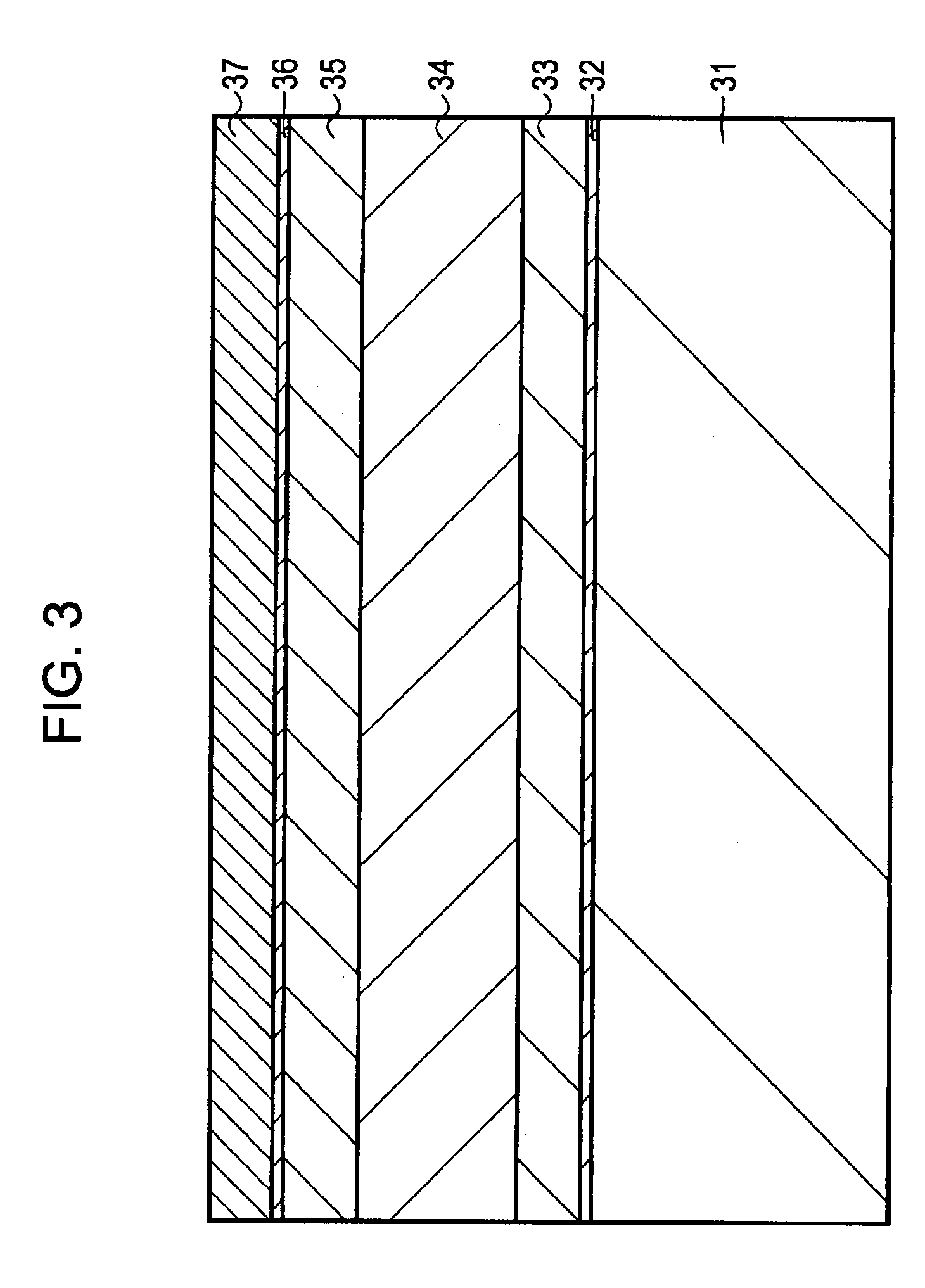Method for driving light-emitting diode, light-emitting diode, method for driving display, display, method for driving electronic device, electronic device, method for driving optical communication apparatus, and optical communication apparatus
a technology of light-emitting diodes and diodes, which is applied in the direction of electric variable regulation, process and machine control, instruments, etc., to achieve the effects of stable emission wavelength, stable color reproduction, and wide dynamic rang
- Summary
- Abstract
- Description
- Claims
- Application Information
AI Technical Summary
Benefits of technology
Problems solved by technology
Method used
Image
Examples
example
[0065] Referring to FIG. 3, vicinal sapphire substrates 31 having main surfaces inclined at angles θ of 0.2°, 0.3°, 0.4°, and 0.6° with respect to the c-plane were used as the vicinal substrate 21, and GaN-based semiconductor layers were grown thereon to form light-emitting diode structures.
[0066] In FIG. 3, each vicinal sapphire substrate 31 was introduced into a reactor of an MOCVD apparatus. A surface of the vicinal sapphire substrate 31 was cleaned in a hydrogen atmosphere at a substrate temperature of 1,050° C. for ten minutes. The substrate temperature was then lowered to 500° C. Supply of ammonia (NH3) into the reactor as a nitrogen (N) source was started, and trimethylgallium (TMG) was supplied as a gallium (Ga) source to deposit a low-temperature-grown GaN buffer layer 32 to a thickness of 20 nm. After the supply of TMG was stopped, the substrate temperature was raised to 1,020° C. with ammonia being supplied. The supply of TMG was then restarted, so that a GaN layer 33 st...
PUM
 Login to View More
Login to View More Abstract
Description
Claims
Application Information
 Login to View More
Login to View More - R&D
- Intellectual Property
- Life Sciences
- Materials
- Tech Scout
- Unparalleled Data Quality
- Higher Quality Content
- 60% Fewer Hallucinations
Browse by: Latest US Patents, China's latest patents, Technical Efficacy Thesaurus, Application Domain, Technology Topic, Popular Technical Reports.
© 2025 PatSnap. All rights reserved.Legal|Privacy policy|Modern Slavery Act Transparency Statement|Sitemap|About US| Contact US: help@patsnap.com



